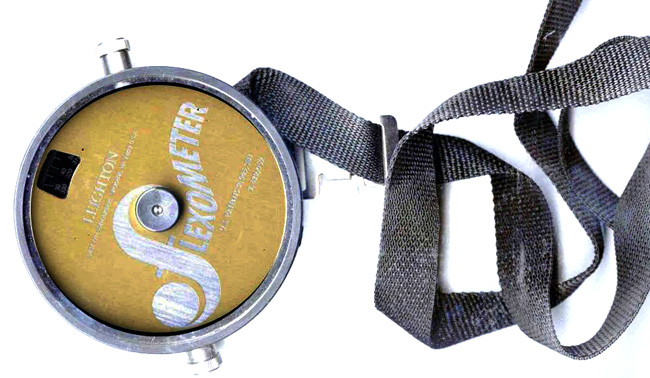A flexometer is a tool for measuring the range of motion of various joints around the body. A goniometer is more commonly used to measure the flexibility of a joint. It is also possible to use an inclinometer or clinometer, instruments designed for measuring angles of slope.
test purpose: the aim of this test is to measure the flexibility of a joint, which is important for injury prevention and execution of many sporting movements.
equipment required: Flexometer (a commonly used flexometer is the Leighton flexometer). A flexometer consists of a 360 degree dial and weighted gravity needle and a strap which attaches to the limb.

procedure: The flexometer is strapped to the body segment to be measured. Lock the dial at 0 degrees at one extreme of the range of movement. After the body segment has moved to the new position, lock the pointer at the other extreme of the range. The degree of arc through which the movement takes place is read directly from the dial.
Uses: it is possible to use the flexometer to measure the angle of movement for the neck, trunk, shoulder, elbow, radioulnar, wrist, hip, knee, and ankle joints.
advantages: A flexometer has the advantage over goniometer as there is no need to identify the axis of rotation.
Related Pages
- More flexibility tests
- about flexibility testing
- See the goniometer phone app
- Flexibility Test Videos
- See also the flexibility exercises on this list of stretches


 Current Events
Current Events